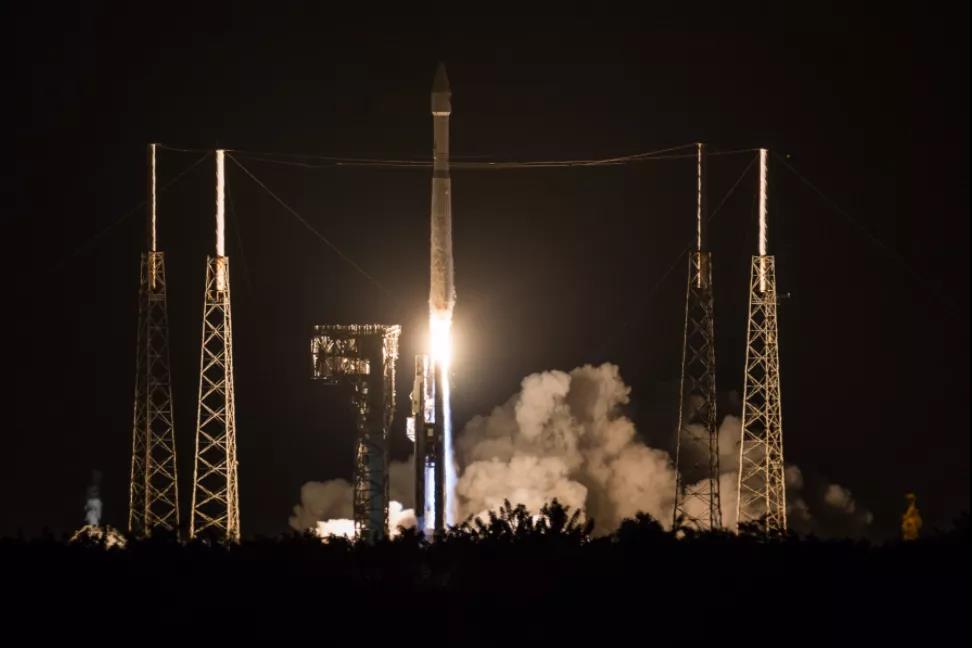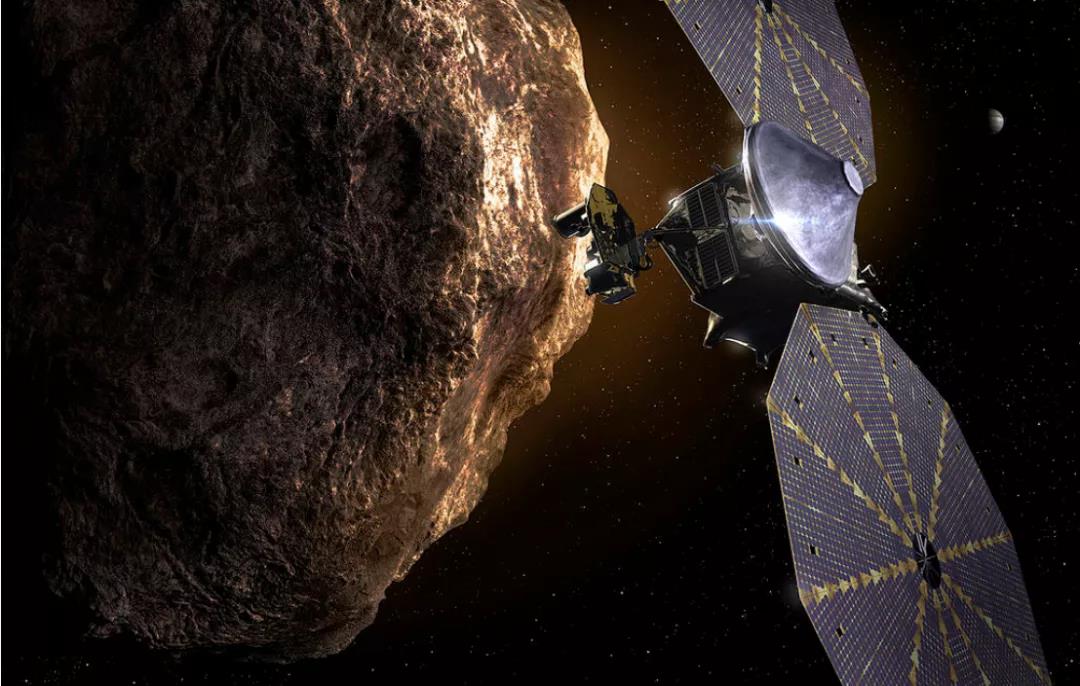NASA's Lucy asteroid probe launches, will explore 8 asteroids along the way

On October 16th, the Space God 5-401 carrier rocket of the United Launch Alliance launched NASA's "Lucy" asteroid probe from the Cape Canaveral Space Force Station. The rocket ignited and took off at 5:34 Eastern Time (17:34 Beijing Time). The separation of the weapons and arrows will take place 58 minutes later.
Lucy "is the latest mission under NASA's" Discovery "planetary science program, costing $981 million and scheduled for January 2017. At the same time, the "Psyche" mission is also selected, scheduled to be launched next year, to explore the metal rich asteroid Psyche. Lucy will fly over a main belt asteroid and seven Trojan asteroids orbiting the sun in the same orbit as Jupiter during a 12 year exploration mission. It is the first exploration mission to cross the Trojan asteroid cluster and will also set a record for the number of asteroids visited in a single mission. Scientists believe that Trojan asteroids are remnants of primitive material left behind during the formation of the solar system.
The name 'Lucy' is derived from a famous fossil of a southern ape, the Alpha species of ancient humans. The reason for choosing this name is that the study of these asteroids will help to understand the early history of the solar system. The chief expert for the task is astronomer Levison from the Southwest Research Institute. The detector is built by Loma and has a launch weight of 1550 kilograms. It will fly to a main belt asteroid as its first exploration target in April 2025 (named "Donald Johnson" after the scientist who discovered the fossil of "Lucy"). From 2027 to 2033, it will conduct flybys and explorations of two groups of seven Trojan asteroids located respectively in front and behind Jupiter. These 7 asteroids include 3 different subclasses and 2 asteroids that orbit each other in a binary system.

Lucy flies over to explore a Trojan asteroid (rendering)
There are a total of three instruments carried on the detector. The Lucy Thermal Emission Spectrometer (L&# 39; TES) will measure the surface temperature of Trojan asteroids by observing thermal infrared spectra, helping to understand the physical properties of surface materials. The Lucy Long Range Reconnaissance Imager (L&# 39; LORRI) is a high-resolution panchromatic visible light camera that will provide the most detailed images of the surface of Trojan asteroids. The L&# 39; Ralph consists of two parts, with the LEISA being an infrared imaging spectrometer and the MVIC capturing color images of the Trojan asteroid to help determine its composition.
The United Launch Alliance received this launch contract at the end of January 2019. Including launch and "other mission related expenses," the total cost of this launch mission is $148.3 million. A key factor in NASA's decision to hand over the contract to the United Launch Alliance is the schedule. The mission profile of 'Lucy' is very complex, requiring a series of flyovers, including three flyovers of Earth in October 2022, December 2024, and December 2030. This requires launching within a window of only 23 days that opens in October 2021. If this window is missed, this task cannot proceed according to the current plan and can only wait until a backup window in October next year. However, launching in that backup window will not affect the scientific objectives of the mission.
The space exploration company once protested to the US Government Accountability Office (GAO) against NASA's decision to hand over the contract to the United Launch Alliance, arguing that it could afford the launch at a price "significantly lower" than the contract amount of the United Launch Alliance, but later withdrew the protest.
It is worth mentioning that the first stage of the Space God 5 rocket used in this launch was originally intended to launch the Boeing CST-100 "Starliner" spacecraft for an unmanned test flight mission, but it was only decided in August to be used to launch the "Lucy". The rocket had already been lifted and was waiting for the spacecraft to take off, but the engineers stopped the launch after discovering that some valves in the spacecraft's propulsion system were stuck. Ground personnel withdrew the spacecraft from the top of the rocket and sent it back to Boeing's factory near the Kennedy Space Center for troubleshooting. The mission codenamed "Orbital Flight Test" (OFT) 2 is expected to take place next year.
Source: Hang Xiaoyu